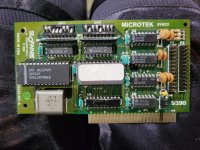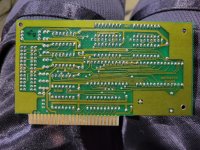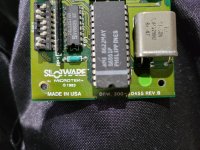onesimus
Experienced Member
Hello! I ended up with this serial card on eBay, hoping I could save a few bucks and not have to get a Super Serial Card. Unfortunately, I did not do sufficient research, because as I have found, there is next to nothing about this card online. While it's definitely a serial card, based on my research, there is at least one source saying it's a parallel card. It's definitely a serial card, though. The worst part is that the jumper settings are nowhere to be found online, explaining why it was cheaper.
I was just wondering if any of you guys have any experience with this card or perhaps know of some archive where the jumper settings are that I can't find. I will include photos.
It is a "Microtek Slotware SV622" made in 1983. There are a couple of other numbers on it, one of which says "DRW. 300-10455 REV. B." After searching both of thees to the best of my ability, I can't for the life of me find the dip switch settings. If any of you guys know anything about this or know of where these settings might be, I would be incredibly thankful, as I'm trying to get my Apple IIe online and perhaps even use it in my IIGS with the AppleSqueezerGS.
May the light of Christ shine in your lives!
I was just wondering if any of you guys have any experience with this card or perhaps know of some archive where the jumper settings are that I can't find. I will include photos.
It is a "Microtek Slotware SV622" made in 1983. There are a couple of other numbers on it, one of which says "DRW. 300-10455 REV. B." After searching both of thees to the best of my ability, I can't for the life of me find the dip switch settings. If any of you guys know anything about this or know of where these settings might be, I would be incredibly thankful, as I'm trying to get my Apple IIe online and perhaps even use it in my IIGS with the AppleSqueezerGS.
May the light of Christ shine in your lives!



